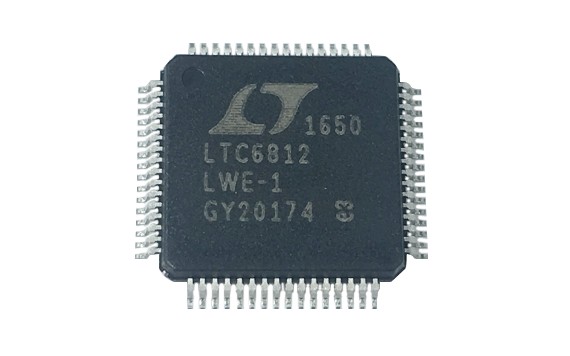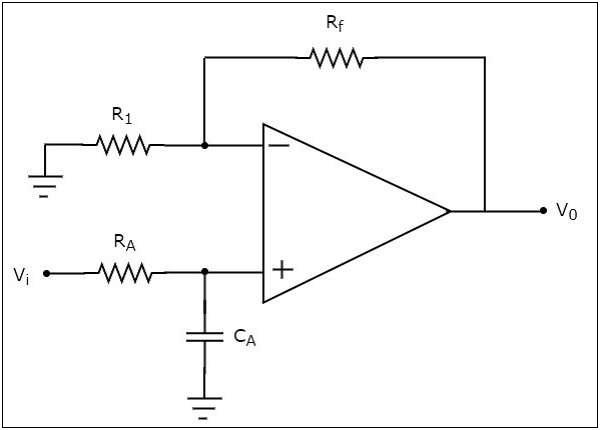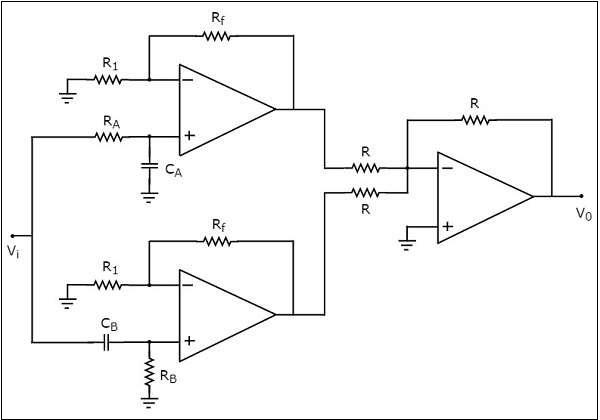What is Active Filter IC? The Complete Guide
What is Active Filter IC? The Complete Guide

Active filter IC. Image source Rantle
Filtering in the world of electronics refers to the ability to filter electric frequencies. Filter ICs are integrated circuits that are designed to filter electric frequencies.
They separate a particular set of frequencies from another.
In most applications, electric signals have different frequencies. Some are needed while others are not.
It is the work of integrated circuits to filter the desired frequencies from the unwanted frequencies.
A collection of electronic components such as resistors, capacitors, transistors, and inductors are brought together to make up a single chip. When combined, they will be able to execute the filtering process easily and efficiently.
The output signal, one that has passed through the filter is usually considered clean and of high quality.
If signal filtering is one of the functionalities that you are considering to add onto your electronic device, then you should consider buying active filter ICs.
In this article, we are going to discuss everything that you should know about active filters. You will learn all the essentials of these filters and things you should look at when buying active filters.
Types of filter ICs
There are four main types of active filter ICs. These are active low pass, active high pass, active band pass, and active band stop filters.
Let’s look at the differences between these four types of filters and we will understand where they are used.
Active low pass filter IC
This type of active filter IC is designed to allow low-frequency signals only while rejecting high-frequency signals.
This chip is designed with a fixed threshold of frequency that can pass through it. Anything above the threshold will not be filtered through it.
According to the working principle of this chip, any frequency above the threshold is considered to be noise.
This means that when choosing an active low-pass filter IC, you should pay attention to its cutoff frequency.
The most common application of this active filter IC type is in sensor systems. Here, filters eliminate any noise that is likely to distort the message that is being sensed.
Here is an image illustrating an active low-pass filter IC;

Image source Tutorials Point
Active high pass filter IC
An active high-pass filter IC allows only high-frequency signals to pass through while rejecting the low-frequency signals.
It is the complete opposite of the active low-pass filter IC.
Based on its working principle, active high filter IC is necessary for applications where you only need high-frequency signals to your load.
A perfect example is in telecommunication systems where high-frequency signals are needed for clarity in data communication.
The design and configuration of an active high-pass filter IC are similar to that of a non-inverting amplifier. Usually, the output signal from this filter IC has a unity gain, which is also known as the voltage-follower buffer.
Active band pass filter IC
As the name suggests, this type of active filter IC is designed to allow only one band of frequencies to pass. Any other frequency that is not within the defined band is not allowed to go through the filter.
Given its working principle, it means that it can reject both high and low frequencies.
An active band filter has two regions, an active high pass filter, and an active low pass filter. The output signal from the high pass filter is directed to the low pass filter where the two combine to produce the desired signal band.
Active band stop filter IC
Also known as a band-stop filter, this type of active filter IC is designed to stop a particular band of frequencies.
Its design encompasses the placement of a low-pass filter in parallel with a high-pass filter.
It will allow signals of all bands except the ones that have been defined on the filter IC. This means that it can allow either high or low-frequency signals to pass through.

Image of active band stop filter
So, which type of active filter IC should I choose from the above options? As we have seen each type is suitable for a specific application area. You should do a deep analysis of your application needs before choosing the chip.
What are the active components of a filter?
As we have already mentioned, active filters are made of different electronic components. Let’s look at some of these components and what they do about the filtering of frequency.
· Transistors: The most common transistors that are used in active filters are MOSFET and BJT. Both are used for the amplification or signals though they are also chosen because of their switching properties.
· Op-amps: The main function of an operational amplifier is to amplify the levels of input signals. Amplification helps to enhance the accuracy of the filtering process.
· Resistors: In most circuits, resistors are used as voltage regulators. They tend to do the same in active filters whereby voltage regulation is vital in controlling the frequency and also power gain in the filter.
· Capacitors: Capacitors in electric circuits serve as power and charge storage devices. They supply the stored charges that are used for streamlining the filtered frequency.
· Inductors: Inductors in most circuits are used as noise-filtering components. They separate electric signals that have different frequencies. By doing so, they make it easier for the filtering process to be executed.
Control mechanisms used by active filters
Filtering frequency in electronic signals has to be controlled to get the desired outcome.
Various control strategies are used by active ICs. They include:
Synchronous reference frame (SRF)
This is the most popular control method that is used by most active filter ICs in the market. It entails transforming three-phase currents and voltages from the defined domain into synchronous frames.
This control method helps to streamline the signal analysis process. Additionally, a control algorithm is used for estimating the harmonic signals and will be involved in filtering out the DC signals.
Instantaneous reactive power theory
This control mechanism is also known as p-q theory. It entails calculating active and reactive powers in the signals. From the calculation, the f active filter chip will obtain the required compensating currents.
This type of control mechanism is mainly used on signals that keep varying instantaneously. It is an ideal control measure for real-time applications.
The choice of IC control strategy to use will depend on the requirement specifications of the application that you are building. The resources required and the nature of the load will also influence the choice of the control method to be used.
Active filter design: Factors that are considered when designing
Other than types, several factors are considered when it comes to choosing designs for the active filters.
Common design considerations include:
Active filter ratings
IC manufacturers have to consider the size and power ratings when designing different types of active filters for various applications.
The rating of active filters is expressed in volt-ampere (VA). This is the maximum power that the filter can handle at any given time.
The size of an active filter measures both the frequency current and the harmonic currents that the active filter is expected to block or filter.
The IC should be able to handle the peak harmonic current under any given condition. This is the only way that you can be sure of the quality of the filtered signals.
IC integration with electronic converters
Being integrated circuits, active filter ICs don’t work in isolation. They are usually integrated with other systems in an electronic device.
Chip manufacturers have to consider integrating active filter ICs with other electronic components in a circuit and system in general.
For example, active filters have to be integrated with various electronic converters especially when you need to process and translate the output signals from the filter.
Frequency and power ratings
Manufacturers also have to consider the frequency and power of the device in which active filter ICs will be used.
Power rating will determine the compatibility of the IC in different applications. It also defines the output that you should expect from the active filter.
Active filter IC quality standards and requirements
Before you buy active filter ICs in bulk, you should pay attention to their quality standards.
The most common standards include IEEE 519, and IEC 61000 standards.
The two cover all the critical aspects of active filter ICs and give assurance of the quality and reliability of the filters.
Conclusion
In conclusion, active filter ICs have a wide range of applications in the modern world of electronics.
Whether it is in audio systems, visual systems, electric instruments, communication systems, or other applications where signal quality is of importance, you should expect to find these chips.
So, under which application area does your product fall under?
Getting the right active signal filter will eventually improve the quality of our product.
The surest place to get such is from reliable active filter IC suppliers and manufacturers in China.
This is what you stand to gain when you choose ICRFQ as your trusted supplier.
We stock a broad range of active IC chips that are sourced from the best brands around the world.
With 20 years of experience in the field, we assure our customers of quality products and services. Contact us directly and we will be glad to work with you.
Kevin Chen
Founder / Writer at Rantle East Electronic Trading Co.,Limited
I am Kevin Chen, I graduated from University of Electronic Science and Technology of China in 2000. I am an electrical and electronic engineer with 23 years of experience, in charge of writting content for ICRFQ. I am willing use my experiences to create reliable and necessary electronic information to help our readers. We welcome readers to engage with us on various topics related to electronics such as IC chips, Diode, Transistor, Module, Relay, opticalcoupler, Connectors etc. Please feel free to share your thoughts and questions on these subjects with us. We look forward to hearing from you!







 Start With
Start With Include With
Include With


